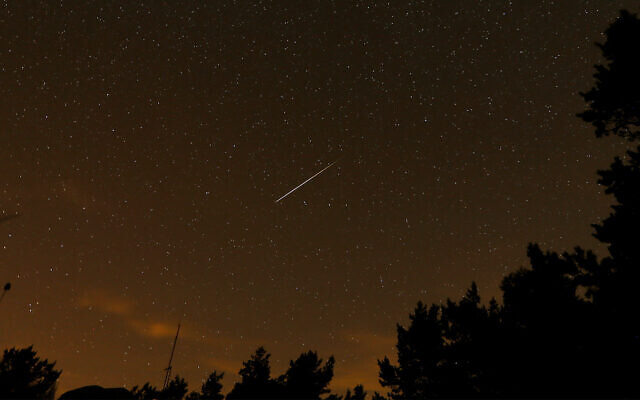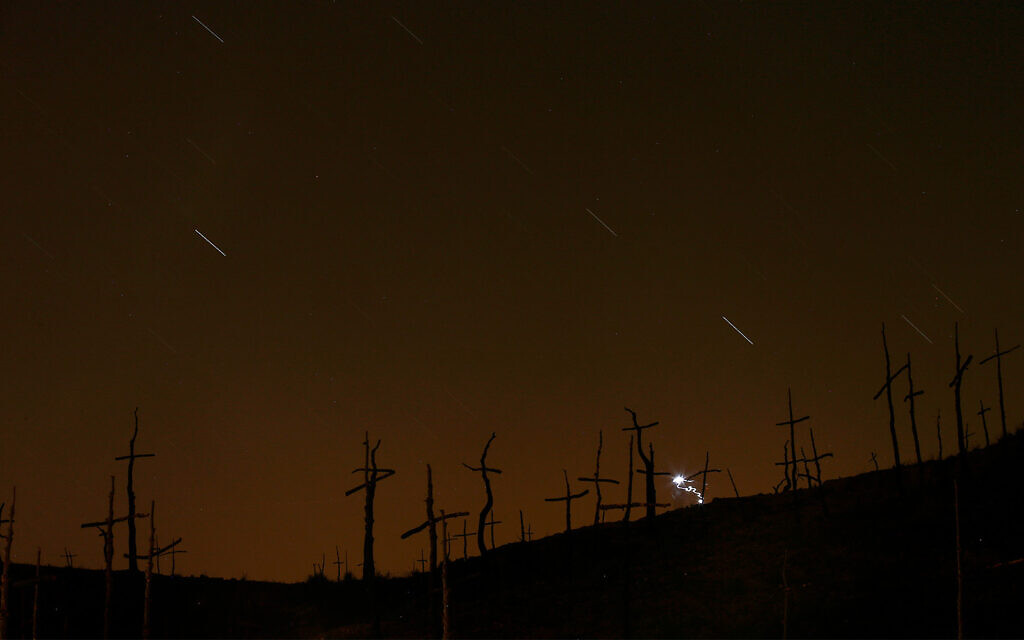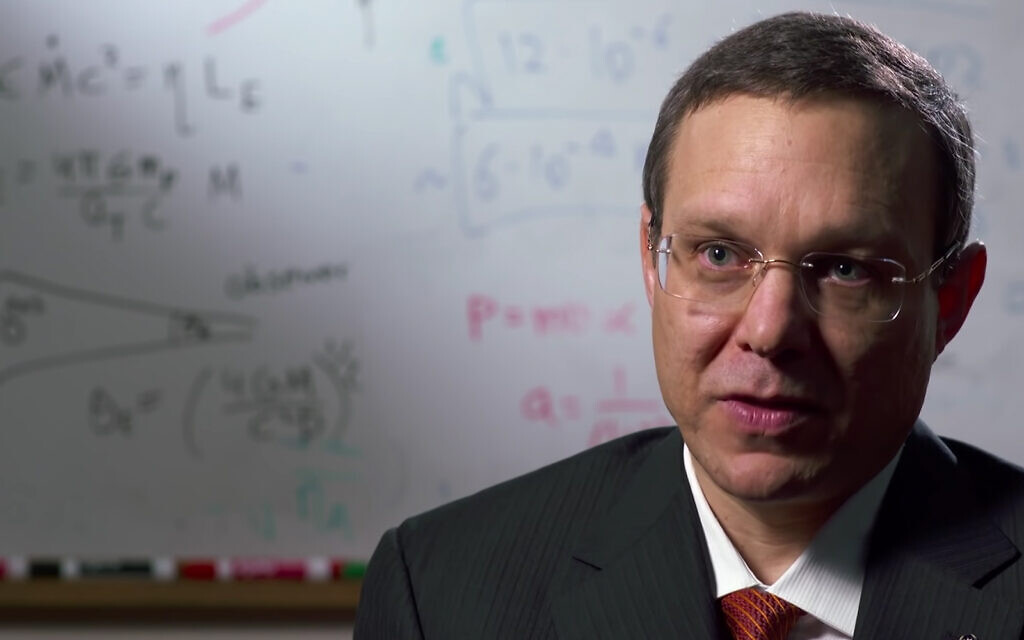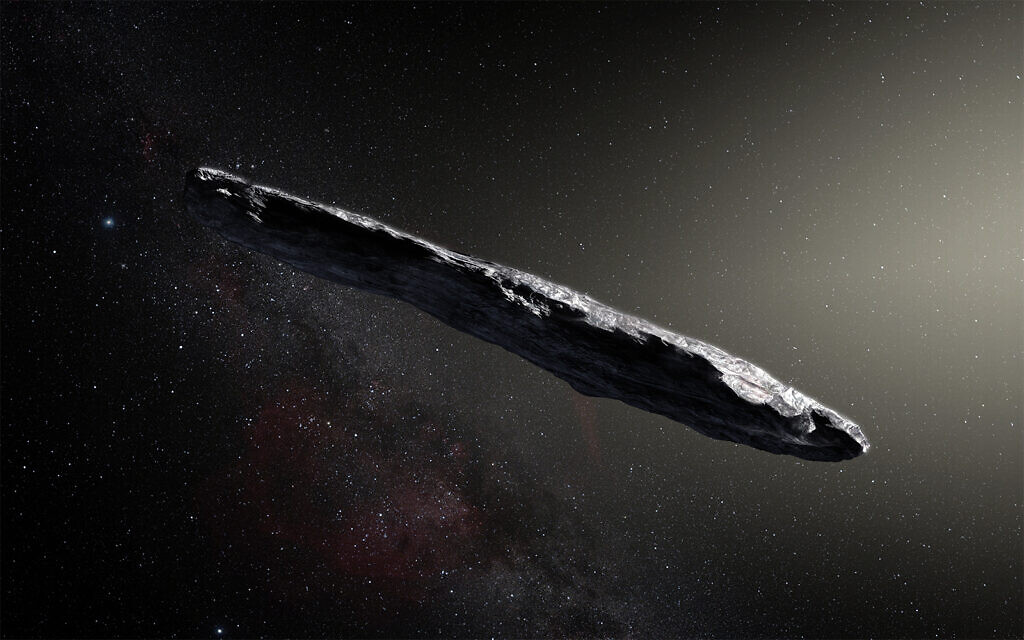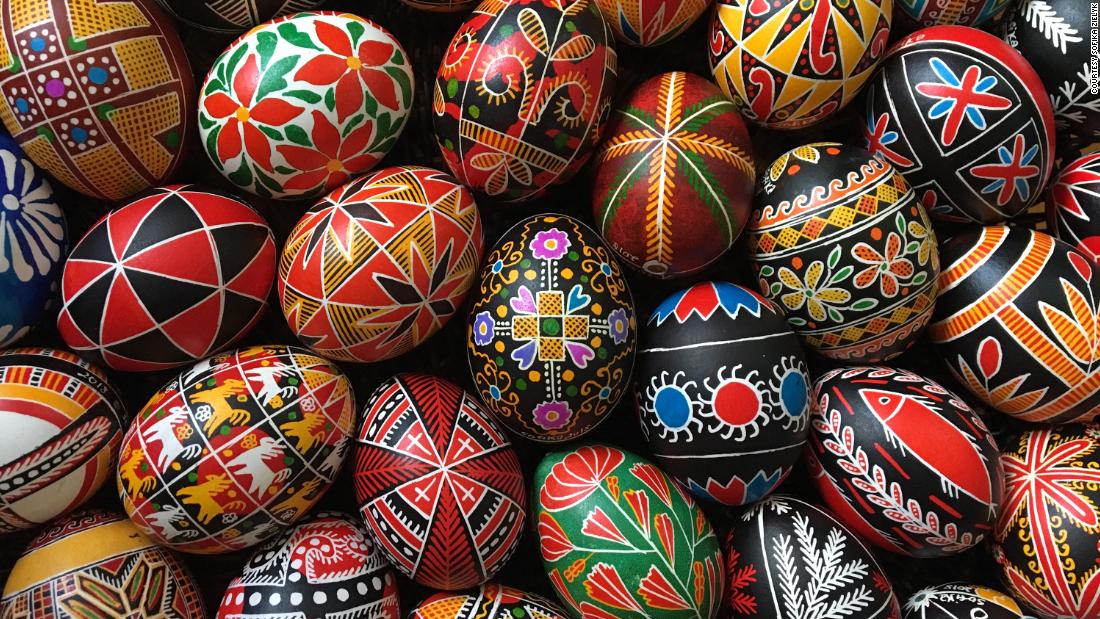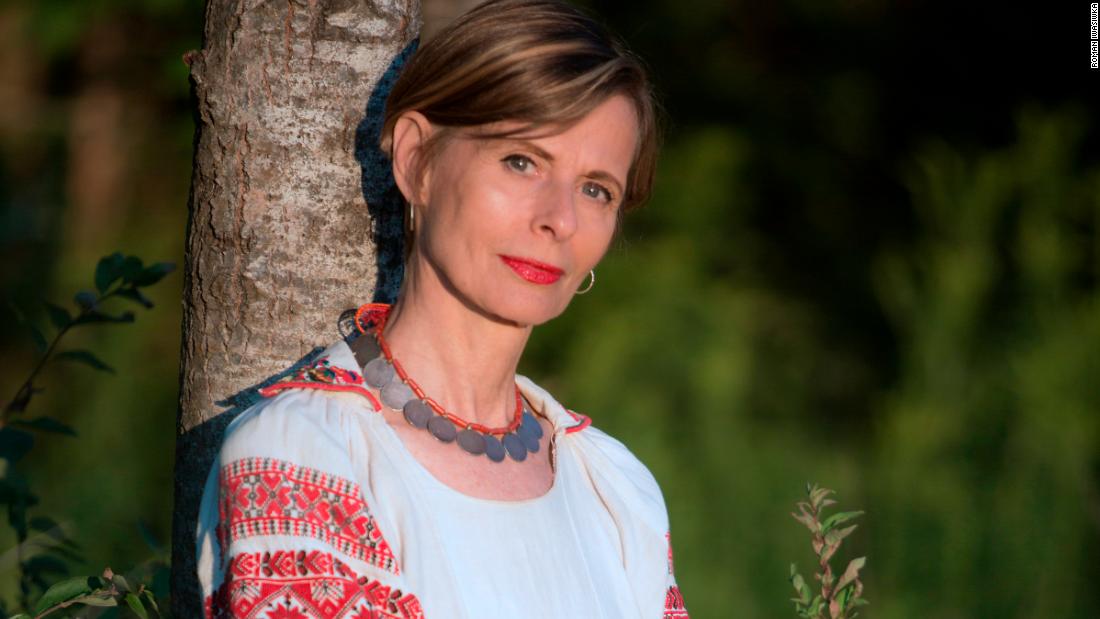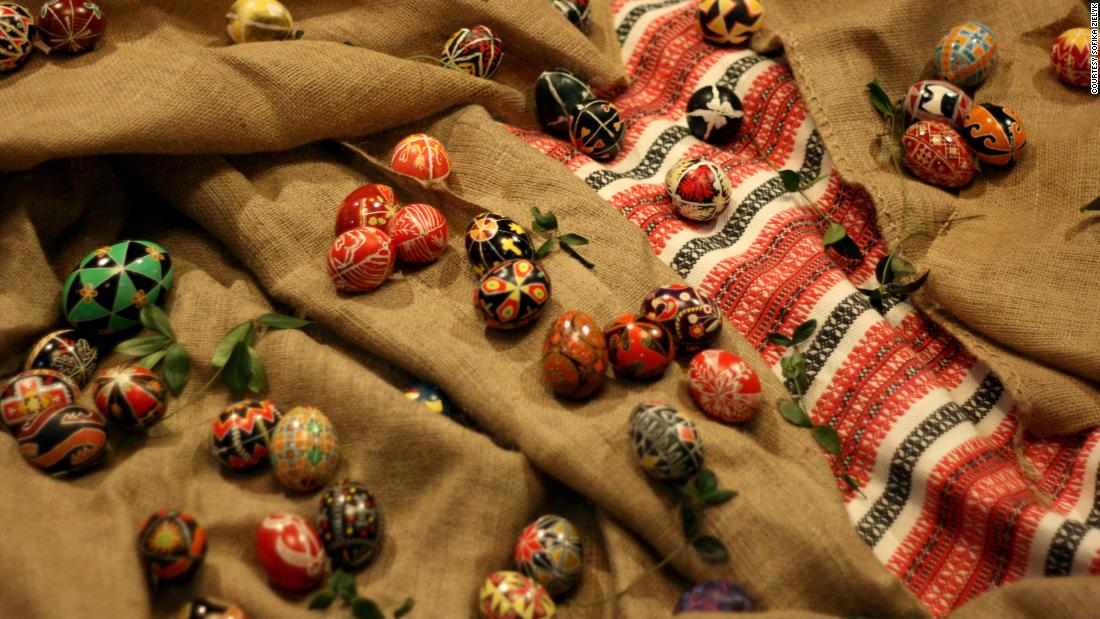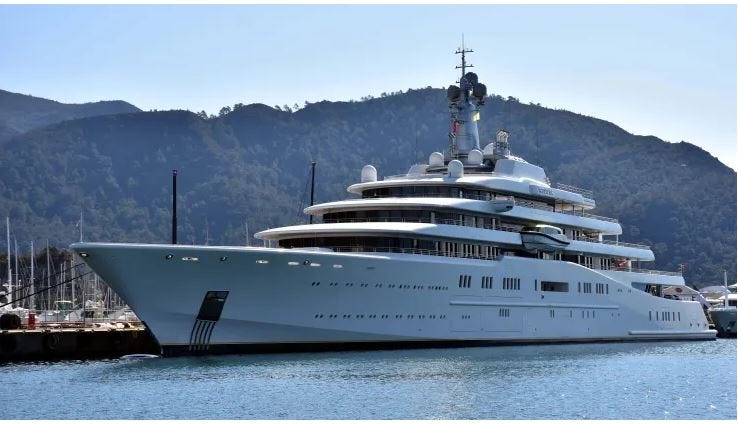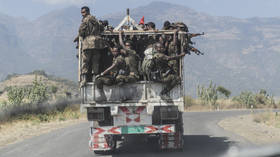Russian warship: Moskva crew 'shown for first time since sinking'
The Russian defence ministry has published images showing what it says is the crew of the warship Moskva - the first time any sailors from the ship have been seen since its sinking.
A large group of sailors is seen on parade in the Crimean port city of Sevastopol, met by Navy Commander-in-Chief Adm Nikolay Yevmenov.
The Moskva was the flagship of the Black Sea Fleet.
The ship's demise has been described as a huge blow to Russian morale.
The ministry announced late on Thursday that the Moskva had sunk on stormy seas after a fire caused by exploding ammunition. Ukraine said it had sunk the ship with two Neptune missiles.
Russia said at the time that the crew had been taken to Sevastopol, a major port Crimea, which Russia annexed from Ukraine in 2014. This, however, is the first time any evidence has been offered of the survival of any sailors.
The video shows Adm Yevmenov and two other officers standing on a parade ground in front of about 100 sailors.
It is not clear when the meeting took place.
 MAX DELANY/AFP
MAX DELANY/AFPIn an interview shown at the end of the video, Adm Yevmenov says that the officers and crew are currently residing at their base in Sevastopol and will continue their service in the navy.
Russia has not reported any casualties from the fire or the sinking.
However, an unnamed US official quoted by Reuters said Washington believed there were casualties.
Ukraine says the ship's captain, Anton Kuprin, was killed on board, but the BBC has been unable to verify the claim.
The 12,490-tonne cruiser is the biggest Russian warship to be sunk in action since World War Two.
On the first day of Russia's invasion of Ukraine on 24 February, the Moskva gained notoriety after calling on a small garrison of Ukrainian border troops defending Snake Island in the Black Sea to surrender - to which they memorably radioed an expletive-laden message of refusal.
Originally built in the Soviet era, the Moskva entered service in the early 1980s. The vessel was actually built in Ukraine's southern city of Mykolaiv, which has been heavily bombed by Russia in recent days.
The guided missile cruiser was previously deployed by Moscow in the Syria conflict where it supplied Russian forces in the country with naval protection from the Mediterranean.
It is the second major vessel Russia has lost since the start of its invasion of Ukraine.
BBC
The first pictures of Russia's wrecked guided-missile cruiser Moskva reportedly reveal a ship unready for action and doomed by raging internal fires.
The fate of President Vladimir Putin's Black Sea Fleet flagship has been confirmed with verified pictures showing the burning hulk abandoned in calm waters shortly before it sank.
The stricken warship is seen listing (leaning) to port (left). Smoke is pouring out of the forward superstructure (command tower). And soot along the length of the ship indicates extensive internal damage.
No crew are visible.
/cloudfront-ap-southeast-2.images.arcpublishing.com/nzme/XS6ZYD4AD6PBMUQE3F6REVTZP4.jpg)
Ukraine claimed it struck the Moskva with two cruise missiles early Thursday morning Australian time.
Several hours later, Russian state-controlled media confirmed an "ammunition explosion" aboard the warship and stated investigations were underway as to the cause. Later, it was announced the ship had foundered "in a storm".
The pictures are believed to have been taken by a crew member of a rescue ship, most likely the rescue tug SB742 – part of the Black Sea's rescue ship squadron.
They show a warship largely abandoned to its fate.
Almost all visible life raft stations are empty, and the large boat crane is extended. This indicates the crew has evacuated the ship.
Warship designers and naval analysts say the images of the burning hulk hint at the true story of how the high-profile command ship was lost.
It's a story of deception, poor preparedness – and a ship that never should have been asked to do what it was doing.
Sleight-of-hand trick
Dr Pawling also points to Moskva's radar equipment as an indication of how Ukraine's two Neptune missiles may have hit the ship.
Recently, Ukrainian forces claimed they "tricked" the Moskva's crew by sending a large surveillance drone into its vicinity.
The story goes that the cruiser's primary radar – which only has a 180-degree field of vision – then allegedly followed the drone as it moved away from land. This could have allowed the Ukrainian missiles to remain largely unnoticed as they dove toward the warship.
British naval architect Dr Rachel Pawling says clues in the Moskva photos indicate this story may be partly correct.
"The engagement radars for SA-N-4 and SA-N-6 both appear to be stowed," Dr Pawling notes.
"I think it unlikely the radar were carefully stowed after the hit: This would lend credence to the story the crew were distracted by a UAV (uncrewed aerial vehicle)."
Essentially, the radars needed to get a highly accurate picture of the approaching missiles were not active. Instead, they were in their "sleep" mode.
Therefore the antimissile gun systems and short-range missiles would not have had the targeting information they needed to defend the ship successfully.
/cloudfront-ap-southeast-2.images.arcpublishing.com/nzme/BUUOQBIUK4FU2W7GDUOW7T6FCA.jpg)
"The distraction here is conceptual," says Dr Pawling. "It's not that they are looking the wrong way; it's that they are focused on the wrong *type* of threat. This has happened to others before."
Blow or blunder
The burning hulk is pictured in calm water. This does not match Russia's official story that the ship sank in a storm after an accident.
In the image, a fire continues to burn in the vessel's heart. But any blaze at the aft (rear) of the ship appears extinguished.
"However it is clear smoke has spread throughout the after half of the ship. And that stuff is nasty," says Dr Pawling.
The soot and scorch marks these fires have left behind are important clues.
Possible puncture marks can be seen on the hull's waterline, directly below the seat of the remaining smoke. It cannot yet be confirmed these are the entry points of the Ukrainian cruise missiles. But they do lend some credence to their claim.
The missiles are programmed to strike ships at this vulnerable point – close to the command structure and deep among its enormous engine rooms.
Dr Pawling notes the cause of much speculation in recent days – the Moskva's huge SS-N-12 aircraft carrier killer missiles – appear intact. A detonation of the four enormous tubes that contain the port (left) side missiles could have explained the ship's catastrophic loss.
Instead, the seat of the fire appears to be among the cruiser's closely packed support weaponry.
Fire and fury
Unlike HMS Sheffield, a British guided-missile destroyer that burnt out and sank during the 1982 Falklands Islands War, the fire aboard Moskva does not appear to have been intense.
"The presence of paint over most of the hull (on the side we can see, anyway) makes a widespread high-temperature fire unlikely," Dr Pawling notes.
But soot is seen at numerous points along the hull.
"This implies a rapid spread of smoke from fires subsequently extinguished," she adds. "This raises questions about what damage control state the ship was in. I suspect low."
Warships are built with fire-resistant bulkheads and blast doors to prevent fire – and just as importantly thick smoke – from spreading.
The blast doors may have been open to ease crew movement.
Smoke could have spread uncontrolled from compartment to compartment, forcing the crew to retreat. Behind it, a low-intensity fire could have followed.
"I would be *very* surprised if internal furnishings met modern fire resistance standards," Dr Pawling concludes.
Vulnerable by design
Russian warships like Moskva look impressive. They are crowded with weaponry, giving them a fearsome reputation.
But it's also a weakness.
Any hit on the ship is likely to strike something serious.
"Major damage seems to be in way of the midships (central) deckhouse with AK-630 CIWS (close-in antimissile weapon system). That's a fair amount of cookoff if the ammo catches," Dr Pawling tweeted.
Another naval analyst pointed out that there was another weapons system in the vicinity of the main blaze.
"Apparently, the missile strike hit the base of the ship's bow superstructure," one naval analyst noted. "The explosion of the warheads and the burning of the remnants of missile fuel to the detonation of the anti-submarine ammunition (RBU-6000) cellars, which were located below the waterline."
And Moscow's ability to fight the subsequent fires may have been crippled from the start.
Based on public versions of the warship's plans, that's also in the vicinity of one of the ship's damage control centres; "So co-ordinating the "internal battle" would have been very difficult," Dr Pawling adds.
The fate of the Moskva cannot be fully assessed from just these two photos. But what they reveal indicates a ship suffering fire, flooding and widespread smoke circulation within the hull before it went down.





